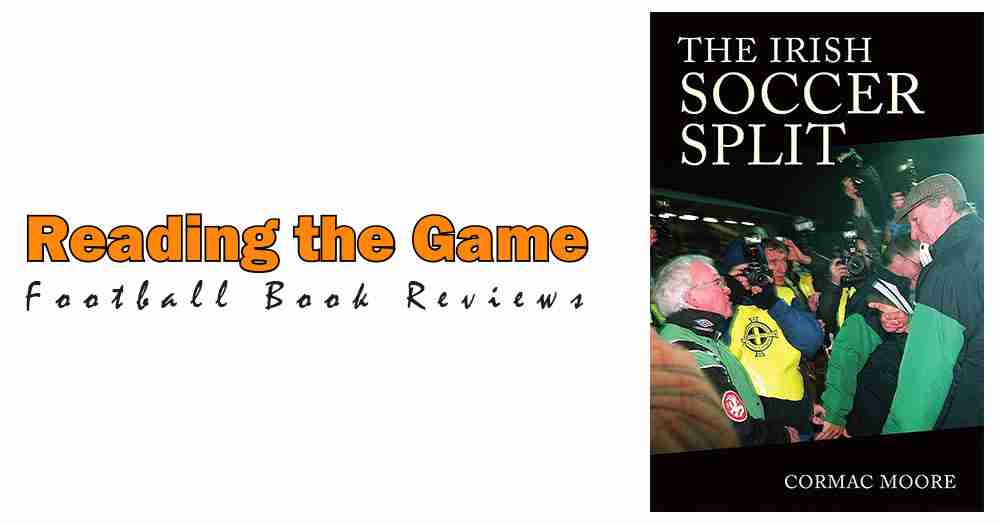For the latest instalment of my series of football book reviews, Reading the Game, I want to talk about The Irish Soccer Split by Cormac Moore.
This was very much an impulse purchase; I found the book on Stanchion while placing an order for a different title; I ended up buying the book I’d gone looking for, this title and a book about the game in Australia which will be reviewed in the coming weeks.
When I ordered The Irish Soccer Split last summer, it was quite timely, given that 2021 marked the centenary of the island of Ireland being split into two countries. I felt certain that this book would shine a light on the political machinations which led to the situation where football in Ireland has two governing bodies and national teams while sports like Rugby Union and Cricket have an all-Ireland national team. In that respect, I wasn’t disappointed.
Given that The Irish Soccer Split is published by Cork University Press, you would expect a certain rigour in terms of the research carried out; Cormac Moore has more than put the effort in in this respect which, given that he is Historian in Residence at Dublin City Council, is no surprise. This is a weighty tome, meticulously researched and superbly illustrated, which charts the early development of football under the control of the Belfast-based Irish Football Association (IFA), why one of the IFA’s provincial members felt the need to break away after partition and what happened next, from the formation of the Football Association of Ireland (FAI) right up to the present day.
It would be fair to say that the IFA doesn’t emerge from Moore’s work unscathed; he quotes their own meeting minutes to suggest decades of bias towards Ulster at the expense of other parts of Ireland and sets out a series of efforts to heal the split, most of which were torpedoed by the IFA’s intransigence.
In addition, Moore details the struggles the FAI had to be recognised internationally and gain membership of FIFA. The role of England’s Football Association at a powerbroker comes in for scrutiny as Moore examines the influence of the English on decisions made by the Scottish and Welsh FAs in particular, but also to a lesser extend beyond the British Isles.
As the book charts the development of the sport in Ireland, the reader learns how further efforts to field an all-Ireland international football team were made during the height of the Troubles in the 1970s and 1980s. Having been born in England in 1980, I had no idea this had been considered and I found this element of the book particularly fascinating.
As The Irish Soccer Split book is more about off-field matters than what happens on the park – although specific matches and events around games are covered – this is a bit of a niche title. That said, if you’re interested in the governance and development of football or, like me, have been personally involved with both these things and the game’s internal politics, this is a hugely rewarding read.
